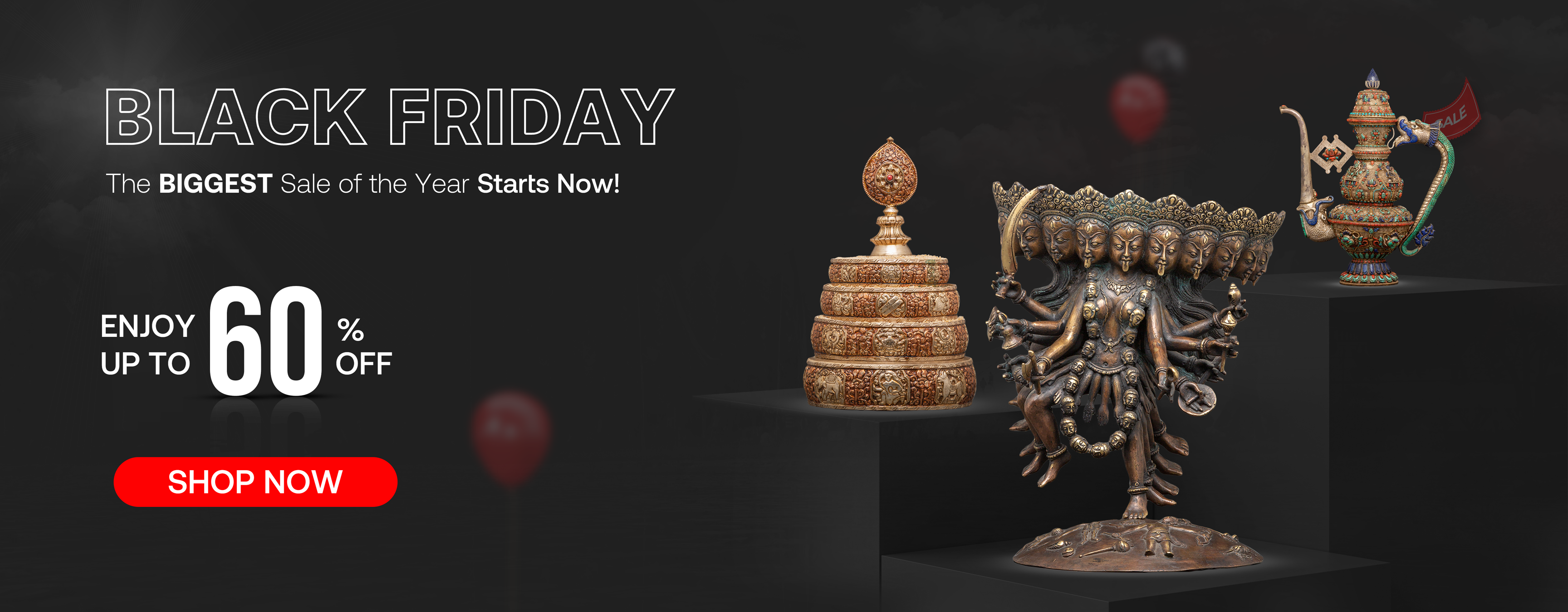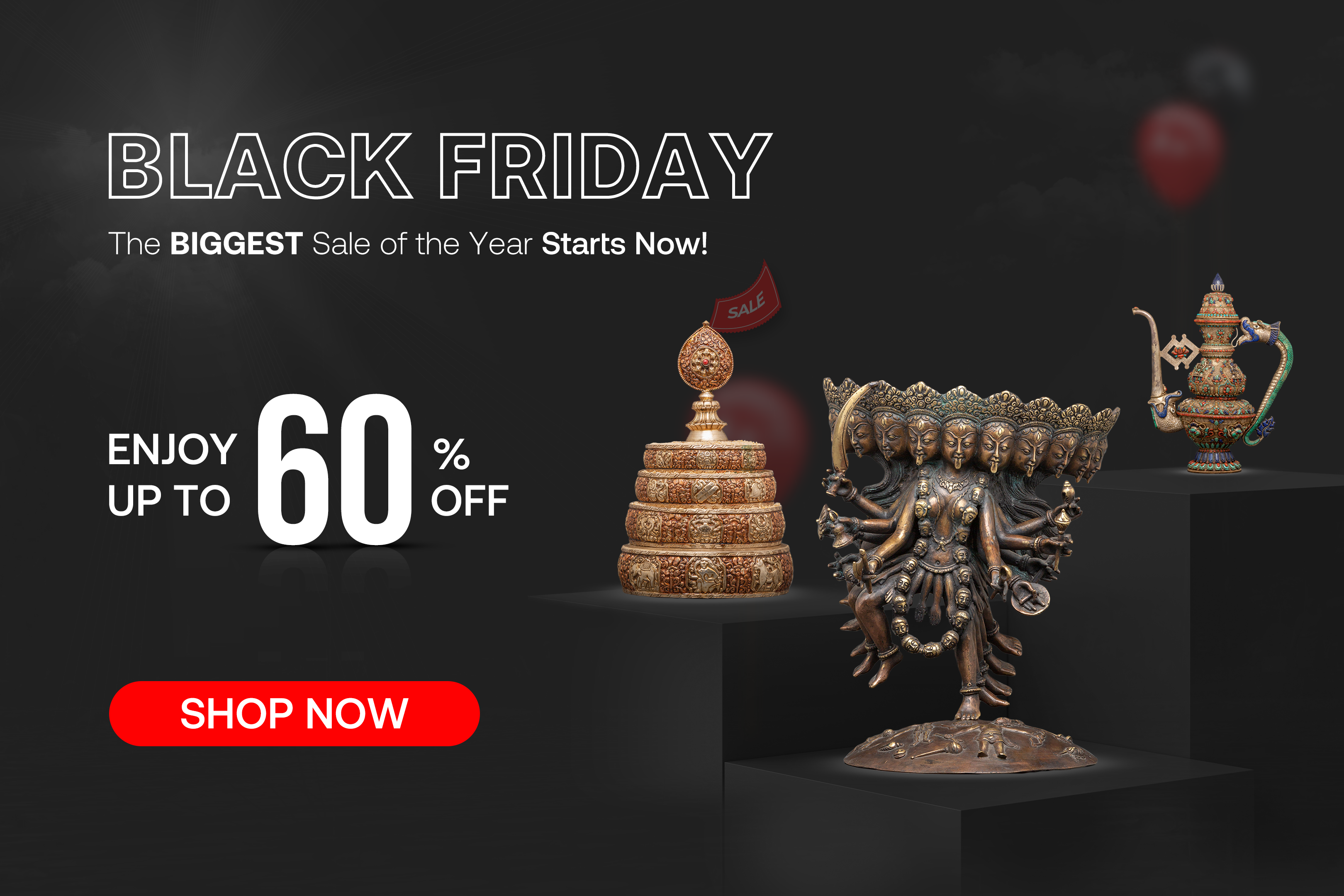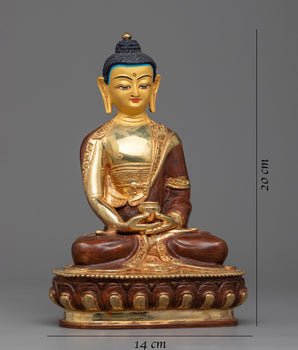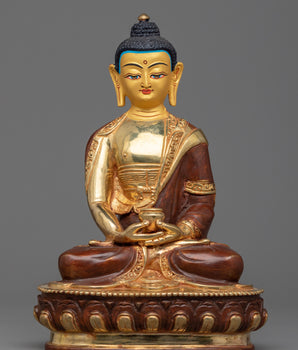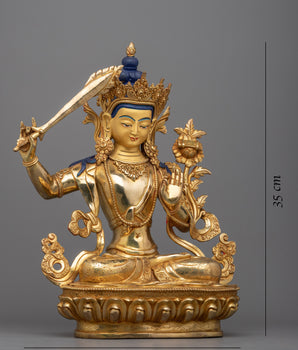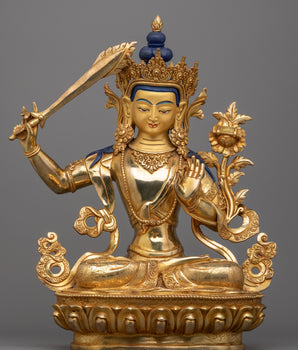In the tapestry of Vajrayāna Buddhism, ritual implements are not mere ornaments but living embodiments of enlightened energy and method. Among these, the phurba (Tibetan: ཕུར་བ, phurba, Sanskrit kīla) or ritual dagger stands as one of the most potent and enigmatic tools.
As the essential attribute of Vajrakīlaya (Dorje Phurba), it is both a symbol and instrument of transformation: cutting through obstacles, binding harmful forces, and manifesting the enlightened activity of wrathful compassion.
This blog will explore:
- The symbolic meaning of the phurba / kīla in Vajrayāna Buddhism
- The relationship between Kīla and Vajrakīlaya
- Types, variations, and styles
- Materials used, their significance,
- Guidelines and care
Kila: The Ritual Dagger, click here to view more

Symbolism & Meaning of the Phurba (Kīla)
1. The Philological and Iconographic Roots
-
Phurba (Tibetan) and kīla (Sanskrit) are commonly used interchangeably. The word “kīla” in Sanskrit refers to a stake, peg, or nail. The Tibetan phurba likewise carries the sense of “nail” or “peg” in a ritual context.
-
In many ritual contexts, the phurba is visualized as piercing or “nailing” space, pinning negative forces, or anchoring the sacred boundary of a ritual ground.
-
The number three is central: the blade typically has three triangular facets, and many phurbas feature tripartite motifs (three faces, three heads, or triadic ornamentation). This reflects the interplay of three poisons or delusions (ignorance, attachment, aversion) and their transformation into wisdom.
-
The pommel (top) and handle often carry faces, deity heads, skulls, or the crown of Vajrakīlaya, symbolizing enlightened potency.
2. Cutting Through the Three Poisons
In tantric iconography and interpretation, the three edges of the blade symbolically “cut” or “transfix” the three root poisons (Sanskrit: mūla kleśas):
-
Ignorance (avidyā)
-
Attachment / craving (rāga / rāga-moha)
-
Aversion / anger (dveṣa / dvesha)
By “nailing down” these roots, the phurba is a tool of internal purification rather than an external weapon. The act of piercing is symbolic of severing delusion.
3. Embodiment of Vajrakīlaya’s Energy
Because the phurba is the primary attribute of Vajrakīlaya, many teachings treat the phurba and Vajrakīlaya as partly interchangeable in tantric visualization. In ritual, the dagger is viewed as a Nirmāṇakāya manifestation of Vajrakīlaya, i.e., the deity’s presence embodied in the implement.
Through empowerment (wang) and consecration, a phurba becomes “alive” — imbued with the inner energy of the deity, capable of actualizing its functions when wielded by a qualified practitioner.
4. Dual Aspects: Wrath and Blessing
One of the subtler but profound features of the phurba is its dual activity:
-
The blade and point are wrathful: to bind, subdue, pierce, transfix negative forces, demons, thought-forms, or inner obscurations.
-
The pommel or crowned end (often with faces or auspicious symbols) functions for blessings, drawing in beneficial energies, healing, and bestowing. Sometimes one speaks of using the reverse side of the dagger to attract blessings rather than repel.
In other words, the phurba is not a purely destructive implement but a balanced instrument of compassionate transformation.
Vajrakīlaya and the Kīla Relationship
To fully appreciate the phurba, one must understand its relationship to Vajrakīlaya (also spelled Vajrakīla, Dorje Phurba).
Who is Vajrakīlaya?
Vajrakīlaya is a wrathful yidam (meditational deity) in Tibetan Buddhism, primarily associated with obstacle removal, purification, and subjugation of negative forces.
He is considered an emanation of Vajrasattva (the Buddha of purification), manifesting as fierce compassion to clear obscurations. Common iconography:
three faces (blue central, red left, white right)
six arms holding the phurba, vajras,
a flaming snare, and
a trident;
four legs crushing demons.
In some lineages, Vajrakīlaya is the principal yidam, especially in the Nyingma tradition, and is incorporated into Kagyu, Sakya, and other schools.

Vajrakilaya in Thangka
The Kīla as Vajrakīlaya’s Tool & Manifestation
Because Vajrakīlaya wields the ritual dagger as his central implement, many sessions consider the phurba itself as an embodied manifestation of his enlightened activity. In tantric ritual, the dagger is considered not separate but inseparable from the deity — the phurba is a manifestation of the deity’s power in object form.
-
When consecrated, the phurba is “installed” with the deity (Vajrakīlaya) via mantra, offerings, and empowerment, thus functioning as a living sacred implement.
-
In meditational practice, one visualizes Vajrakīlaya’s phurba as piercing and dissipating the roots of obstacles within one’s own mindstream. The practitioner may mentally identify the dagger’s tip with the focus of one-pointed concentration (ekagrata).
Types, Styles & Variations of Ritual Daggers: Phurba
Phurba come in a wide variety of styles, forms, and regional variations. Below are some typologies and variations to look out for, including those in the Evamratna catalog.
Structural Variations
-
Single-bladed vs Multi-bladed
The standard is tri-faced triple blade (three planes), but there exist phurbas with four facets or other variations (though less common) -
Number of faces / heads
Many phurbas feature three faces of Vajrakīlaya (joyful, wrathful, peaceful) on the pommel. But some may have only one face or more complex multi-headed crowns. -
Ornamentation on handle / hilt
The handle may show vajra motifs (double or triple vajra), knotwork, Nāga serpents winding around, skull motifs, etc. -
Pommel / crown types
Some phurbas have a flattened “nail head” top, others depict lotus, Makara (sea‐monster) motifs, stupa shapes, umbrella caps, or even Garuda motifs. -
Size & proportions
Phurbas range from small personal daggers to large ceremonial pieces severalinches or even a foot long.
Regional & Cultural Variations
-
Tibetan vs Himalayan vs Newar
In Nepal (Nepalese / Newar lineages), phurbas may reflect distinct artisan styles, local motifs, or combined Buddhist–Bön symbolism. -
Shamanic phurba (Jhānkri / Gubāju)
Among Himalayan shamans (jhānkri) and Newari priests (gubajus), phurba styles may emphasize functionality (less ornamentation) and local materials. Khyung Garuda ཁྲོཾ+1 -
Bön phurba
Bön traditions also employ kīla implements; while many structural features overlap, the iconographic symbols may differ slightly, especially in top crowns and spiritual associations.
Materials & Their Significance
The material of the phurba is not arbitrary; each substance carries symbolic and energetic meaning.
-
Metal (Iron, Meteoric Iron, Thokcha, Steel, Brass, Copper)
-
Iron is traditional, strong, and penetrating. Meteoric iron (known as thokcha or “thunder-iron”) is especially prized: seen as heavenly metal, infused with cosmic energy.
-
Brass / bronze are sometimes used (often for more decorative phurbas). Copper is sometimes used, especially for magnetizing, attracting beneficial forces
-
-
Bone / Horn
-
Human or animal bone (e.g., yak bone) or horn can be used for particularly wrathful, fierce phurbas. The bone’s impermanence symbolism aligns with tantric themes.
-
Ethically Sourced Bone Phurba

-
-
Wood
-
Less common in formal Vajrayāna (since metal is preferred), but used in shamanic or local contexts. Wood phurbas may be lighter, more for symbolic rituals.
-
-
Crystal / Gemstone
-
Crystal (clear quartz or colored variants) phurbas are seen in some modern ritual/artisan pieces. They emphasize clarity, purity, and non-obstruction. Evamratna carries crystal phurbas in their collectionBecause many of these materials carry both symbolic and energetic connotations, skilled artisans and ritual masters choose materials intentionally for the desired spiritual effect.
-
Ethical Precautions & Respect
Because of its symbolic potency:
- The phurba is not an ordinary decorative prop for uninstructed persons.
- One should avoid casual or disrespectful display.
- Use should align with pure motivation and ethical aspiration (bodhicitta).
- The face(s) or blade are often wrapped when shown in non-ritual contexts to avoid mischief or misuse.
- Only perform ritual uses the practitioner is authorized and trained in.
Maintenance & Care
-
Store the dagger in a clean, sacred space.
-
Some traditions wrap it in silk or cloth when not in use.
-
Keep metal surfaces from rusting, especially iron or meteorite phurbas.
-
Handle only after purification rituals or fumigation.
Its structural triadic geometry mirrors core tantric architecture. Its materials carry symbolic import. Its ritual usage is strict, disciplined, and profound. In the hands of a qualified practitioner, it becomes a direct means of purifying inner obscurations, pinning down negative forces, and manifesting the enlightened activity of the deity.
Evamratna’s collection, spanning copper, silver, gold-plated, bone, and crystal phurbas, underscores the continuing vitality of this tradition in present times — offering practitioners access to both beauty and sacred potency, provided they adhere to proper consecration and use.







